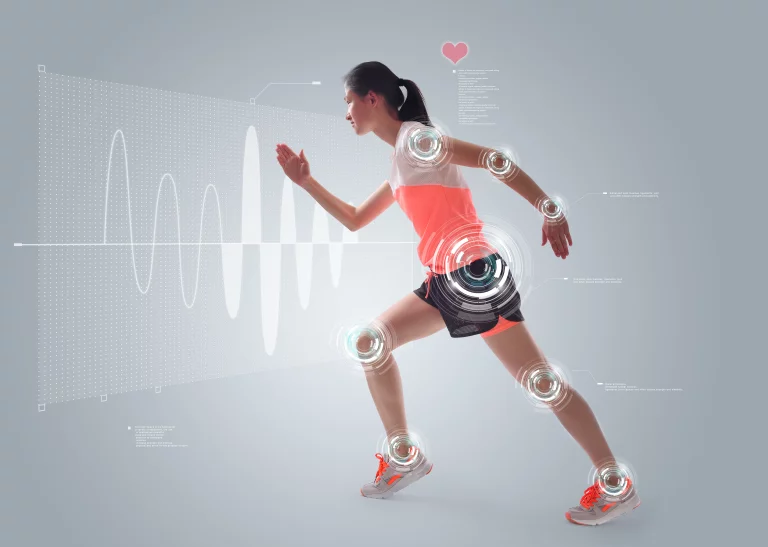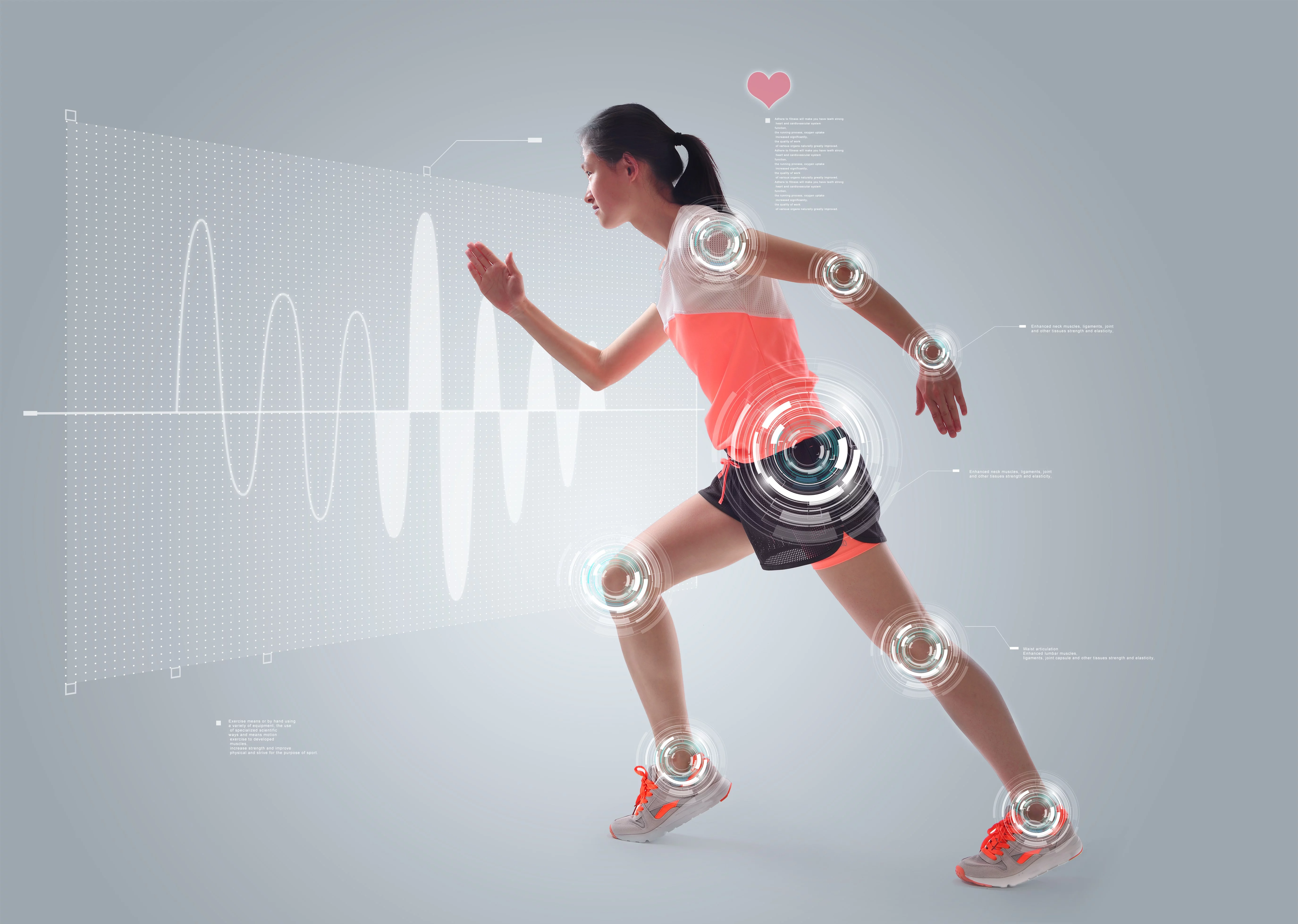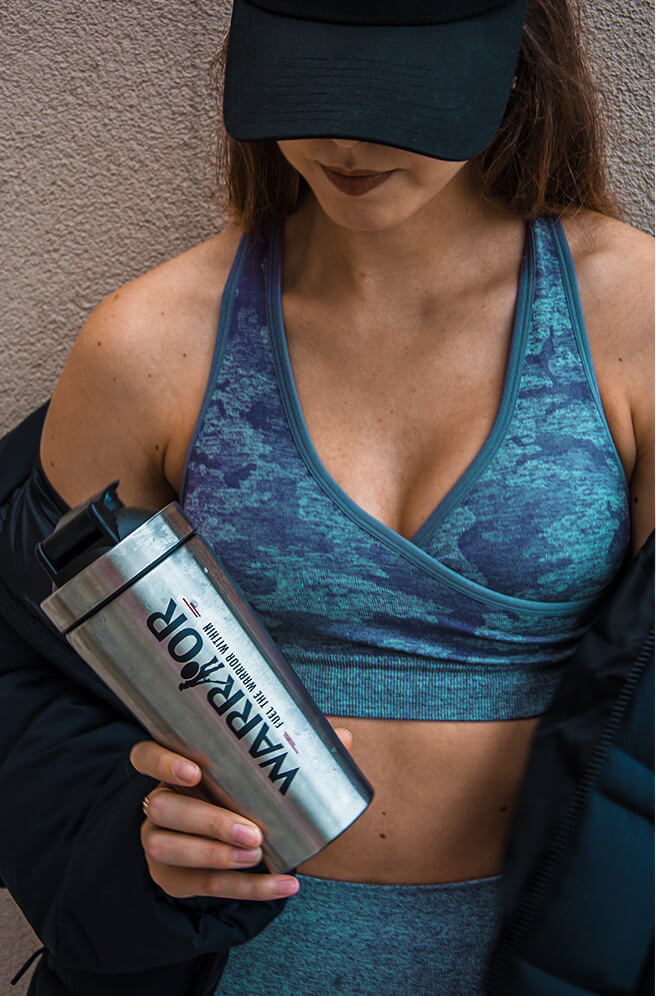Collagen type I, II, III - an important component of your body. Do you have enough of it?

Connective tissue plays an important role in the construction of the locomotor system. Connective tissues include connective tissue, cartilage, and bone, with collagen, in fact its fibres, forming its most voluminous component. Why is collagen so important for humans? You will learn in this article.
Structure
The basis of connective tissue fibres is collagen, an insoluble and most abundant protein in the animal kingdom. At present, we know of at least 28 different types of collagen, but the human body consists mainly of types I, II and III [1].
Synthesis
Collagen is synthesized on ribosomes - cellular organelles present in all living organisms with the exception of viruses, whose function is protein synthesis (proteosynthesis). By the mechanism of so-called exocytosis, procollagen molecules are released at the beginning of the process of collagen synthesis, from which tropocollagen is formed by cleavage of selected structures. The stepwise arrangement of the tropocollagen units produces a fibril, which is then grouped into fibres [2].
Layout
The basic structural unit of collagen is the dextrorotatory triple helix formed by amino acids, the most abundant of which are glycine, proline and hydroxyproline [3]. Protofibrils are formed by polymerization of tropocollagen. Type I-III collagens can form thicker structures - fibrils, fibres, or their bundles.
Species and types of collagens
From a biomechanical point of view, we distinguish two basic types of collagen - fibrillar and non-fibrillar.
FIBRILLAR COLLAGENS – The most common type I s found in the skin, tendons, bones, cornea, lungs and blood vessels. Type II collagen occurs practically only in cartilage. Type III is found in elastic tissues (vessels, embryonic skin, lungs), in increased amounts it is present in older and highly stressed tendons [1,4].
NON-FIBRILLAR COLLAGENS – Among the best studied collagens of this species are type IV, which form the structures of the basement membranes, which are specialized structures lying at the boundaries of tissues, located below the individual cells of different species. Another representative of non-fibrillar collagen is type VII, which interconnects the layers of skin, cuticle and dermis. In addition to the above, we can underline the role of, for example, type VI (preservation of tissue integrity), type XIV and XVIII (basal membranes) and others [1].
Mechanical properties of collagen
The mechanical properties of collagen depend on its composition and the cross-sectional arrangement of the fibres. Although the division of one component into several parts does not affect the resulting strength, it brings two important advantages. The first is the so-called Cook-Gordon effect (cracks in collagen fibres cannot propagate as easily as in the case of a monolithic mass), the second is flexibility directly increasing with growing number of fibres and inversely proportional to the square of the radius of each fibre [5 ]. The periodic arrangement of the microfibrils noticeable in the microscope affects the resulting strength and elasticity of the tissues. It is given by the arrangement of tropocollagen molecules of a specific length, which overlap each other. There are so-called lacunar regions between the molecules, gaps allowing them to move relative to each other. In pathological processes and in old age, the tensile strength decreases, and the value of maximum elongation decreases due to a change in the arrangement of tropocollagen [6,7].
How does collagen deficiency manifest itself?
Musculoskeletal disorders - insufficient joint mobility, joint pain, frequent inflammatory diseases, degenerative processes
Deteriorated skin condition - reduced elasticity, higher incidence of wrinkles and pigment spots, accelerated skin aging
Breaking and splitting nails
Deteriorated hair condition - breaking, drying, deteriorating quality and growth
Deteriorated condition and function of tissues - in the teeth and gums, muscles, and tendons
Collagen as a nutritional supplement
Among nutritional supplements, we find two basic groups of preparations containing collagen - pure (crystalline) collagen and collagen hydrolysate.
CRYSTALLINE COLLAGEN
It is mostly denatured or lyophilized (dewatered by evaporation from frozen product) natural type II collagen, some dietary supplements declare type I collagen. The source of type II collagen is bovine and porcine articular cartilage, chicken sternal (derived from the sternum) cartilage. An abundant source of type I collagen is animal bone. Unlike collagen hydrolysate, crystalline collagen is insoluble in water. Dietary supplements with crystalline collagen contain a wide range of daily doses ranging from 10 to 500 mg of type II collagen, the recommended dose for the treatment of rheumatoid arthritis and osteoarthritis being 40 mg per day. According to several studies, the use of crystalline collagen has a positive effect on reducing joint pain and stiffness [8], i.e. on improving their mobility [9].
COLLAGEN HYDROLYSATE (COLLAGEN PEPTIDES, CLEAVAGE gelatine)
It is prepared by the enzymatic hydrolysis of gelatine, which is obtained from pork skin, skin grafts and bone pieces. It is very soluble in water. It is composed of peptides of relatively low molecular weight and this affects its physical properties. It dissolves very well in water and does not swell like gelatine. It contains more glycine, proline and hydroxyproline compared to regular foods. The recommended dose is at the level of 10 mg per day, while its benefits lie not only in the better condition of the joints, but also in the skin.
SOURCES:
FRATZL, P. Collagen: structure and mechanics. New York: Springer, 2008, 506 p. ISBN 978-0-387-73905-2.
FRATZL, P., WEINKAMER, R. Nature´s hierarchical materials. Progress in Materials Science [online]. 2007, vol. 52, nr. 8, p. 1263-1334. ISSN 0079-6425. DOI: 10.1016/j.pmatsci.2007.06.001. Available at: http://linkinghub.elsevier.com/retrieve/pii/S007964250700045X
LODISH, H., BERK, A., ZIPURSKY, L. Molecular cell biology. New York: W.H. Freeman, 2000, 1084 p., ISBN 07-167-3136-3.
WANG, J. Mechanobiology of tendon. Journal of Biomechanics [online]. 2005, vol. 39, nr. 9, p. 1563-1582. ISSN 00219290. DOI: 10.1016/j.jbiomech.2005.05.011. Available at: http://linkinghub.elsevier.com/retrieve/pii/S0021929005002265
OTTANI, V., RASPANTI, M., RUGGERI, A. Collagen structure and functional implications. Elsevier Science Ltd. [online]. 2001, vol. 32, p. 251-260. Available at: http://www.sciencedirect.com/science/article/pii/S0968432800000421
NAVRÁTIL, L., ROSINA J. et al. Medical biophysics. Prague 7: Grada Publishing, a. s., 2005, 524 p. ISBN 978-80-247-1152-2.
KONRÁDOVÁ, V., UHLÍK, J., VAJNER, L. Functional histology. Jinočany: H&H Vyšehradská, s.r.o., 2000, 291 p. ISBN 80-86022-80-3.
TRENTHAM, D., DYNESIUS-TRENTHAM, R. et al. Effects of oral administration of type II collagen on rheumatoid arthritis. Science [online]. 1993, vol. 261, nr. 5129, p. 1727-1730. ISSN 1095-9203. DOI: 10.1126/science.8378772. Available at: https://science.sciencemag.org/content/261/5129/1727.long
LUGO, J., SAIYED, Z. et al. Undenatured type II collagen (UC-II®) for joint support: a randomized, double-blind, placebo-controlled study in healthy volunteers. Journal of the International Society of Sport Nutrition [online]. 2013, vol. 10, nr. 48, p. 1-12. ISSN 1550-2783. DOI: 10.1186/1550-2783-10-48. Available at: https://jissn.biomedcentral.com/track/pdf/10.1186/1550-2783-10-48




